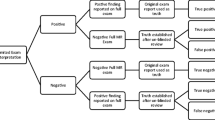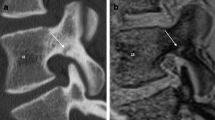Abstract
Purpose: To examine the utility of low-field, dedicated extremity MRI for assessing acute upper extremity trauma in patients with radiographs that are negative for fracture. Secondly, to determine which sequences are most useful when screening for fractures. Methods: Forty-four of 46 patients with acute upper extremity trauma and initial radiographs negative for fracture were imaged with a 0.2-T MRI system. Findings were verified with follow-up clinical assessment and plain radiography. Results: In 21 patients, dedicated extremity MRI demonstrated 26 ultimately proven occult fractures, none of which were seen on the initial conventional radiographs. True fractures demonstrated marrow edema and a linear fracture line on low-field MRI. One bone contusion showed edema with no fracture line and was misdiagnosed as a fracture. Low-field MRI correctly identified 23 remaining patients with no fracture. Sensitivity and specificity for fracture in the 44 patients successfully imaged were 100 % and 96 %, respectively. Additionally, 21 soft-tissue injuries were found incidentally by MRI. However, these may not merely be incidental findings of an acute nature, but may very well be chronic, and therefore merit no specific treatment. T1-weighted gradient-echo and short-tau inversion recovery sequences demonstrated the fracture line and marrow edema to best advantage, and were thus the most useful sequences to assess fractures on low-field MRI. Conclusion: Extremity MRI is highly sensitive and specific for radiographically occult fractures of the upper extremity and can also identify associated soft-tissue injuries. In our study, the management was altered in 45 % of the patients following MRI. When adequate sequences are used this modality can direct appropriate therapy while obviating the added expense and morbidity of unnecessary immobilization and follow-up imaging of patients without fracture.
Similar content being viewed by others
Author information
Authors and Affiliations
Rights and permissions
About this article
Cite this article
Hottya, G., Häckl, F., Iwasko, N. et al. Assessing radiographically occult upper extremity fractures with dedicated extremity MRI. Emergency Radiology 7, 339–348 (2000). https://doi.org/10.1007/PL00011854
Issue Date:
DOI: https://doi.org/10.1007/PL00011854




